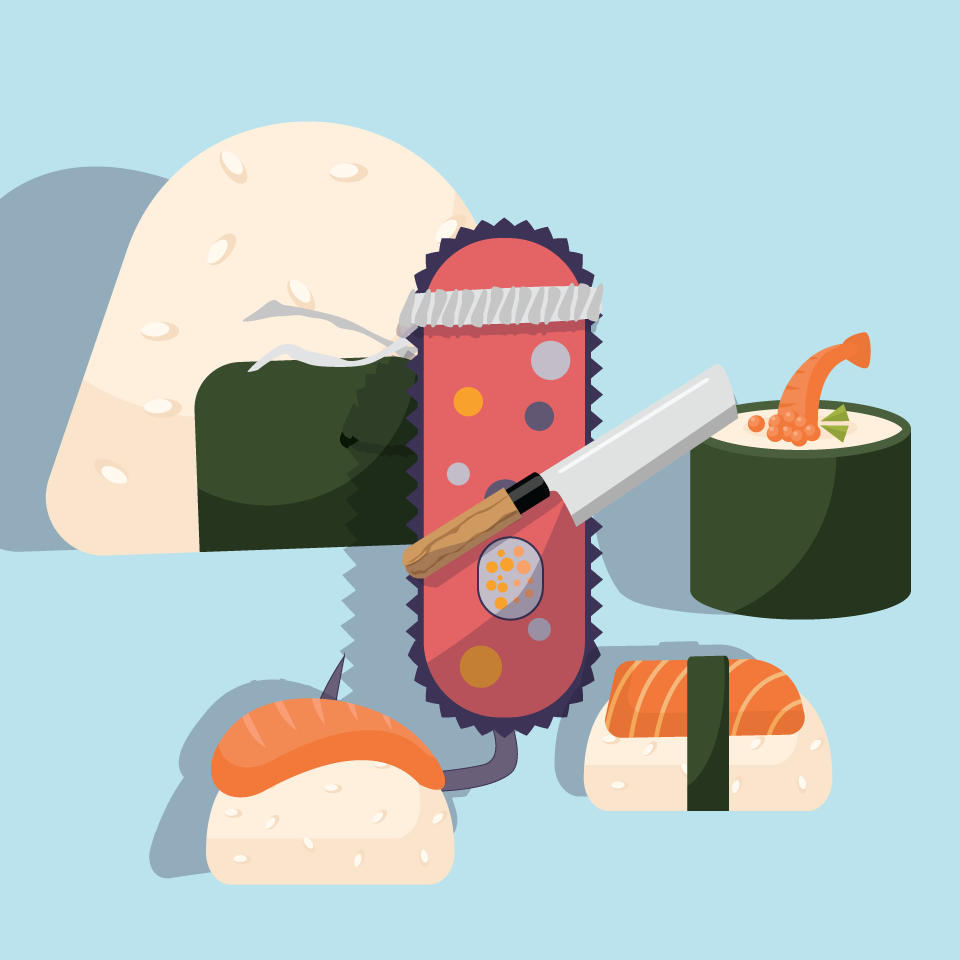When in Rome, do as the Romans do. So we are. We are currently roaming and eating our way through the small narrow streets of Tokyo. Each time we stop at or pass by a restaurant or a small busy street food stall you can always spot the omnipresent Nori algae. It always reminds me of one of my favourite microbiology story: The Sushi factor. This is the kind of story that convinced me, a while back when I was in my master program in Paris, that I was doing the right thing.
It’s well known that we all carry with us a whole ecosystem of bacteria within our gut; even the Guardian talks at length about it. Bacteria are everywhere and our gut is no exception. It is in fact quite a good spot to be, you are the first in line to get all the nutrients your host eats. Particularly the one he can’t properly digest, for example, the large carbohydrate molecules found in the plant fibres. Humans possess only a few genes to digest polysaccharides, but gut bacteria have many. Bacteria degrade the polysaccharides into smaller sugar chains that our gut can process, giving us a little extra energy boost. We have identified the usual suspects doing this in vertebrate guts and they are mainly bacteria belonging to the Firmicutes and the Bacteroidetes. They are all equipped to digest polysaccharides from vegetables and fruits from the land surrounding us.
Algae are also composed of polysaccharides but those large sugars are different from the one found on land and are a more difficult to be digested by our (at least my) resident fibre munchers. However, this task is not a problem for many marine bacteria often associated with the algae and many studies have looked at how those bacteria are capable of such digestions. Zobellia galactanivorans, a flavobacteria isolated from the surface of a red algae was the prime candidate to explore these new metabolic pathways. Jan-Hendrik Hehemann, from the University of Victoria at the time, was investigating the newly sequenced genome of Z. galactanivorans and he identified five new genes involved in the degradation of porphyran. Five new genes coding for an entirely new family of enzymes. That was quite cool in itself, but it did not stop there.
They started to mine public database to look for other genomes with similar genes and this is where we come back to our Japan trip. They did find the porphyranases present in a few marine bacteria as expected but they also found them in one additional and more surprising ecosystem: the Japanese gut. The search was extended to a data set where the gut microbiota of Japanese and American patients where compared and the porphyranase where only found associated with the Japanese subjects. They even identified the carrying bacteria: the bacteroidetes Bacteroides plebeius.

How did this happen? Well, Nori and other algae are quite present in the Japanese culinary culture. The high consumption of algae and their associated microbiota might have increased the chance of lateral gene transfer between the Flavobacteria Z. galactivorans and the Bacteroidetes B. plebeius. The acquisition of an extra metabolic pathway in the Japanese gut ecosystem profits everyone; B. plebeius, the surrounding community feeding on the leftovers and the host who can indirectly digest one of the most common algae fibres he consumes.
The old saying, you are what you eat has never been so true.